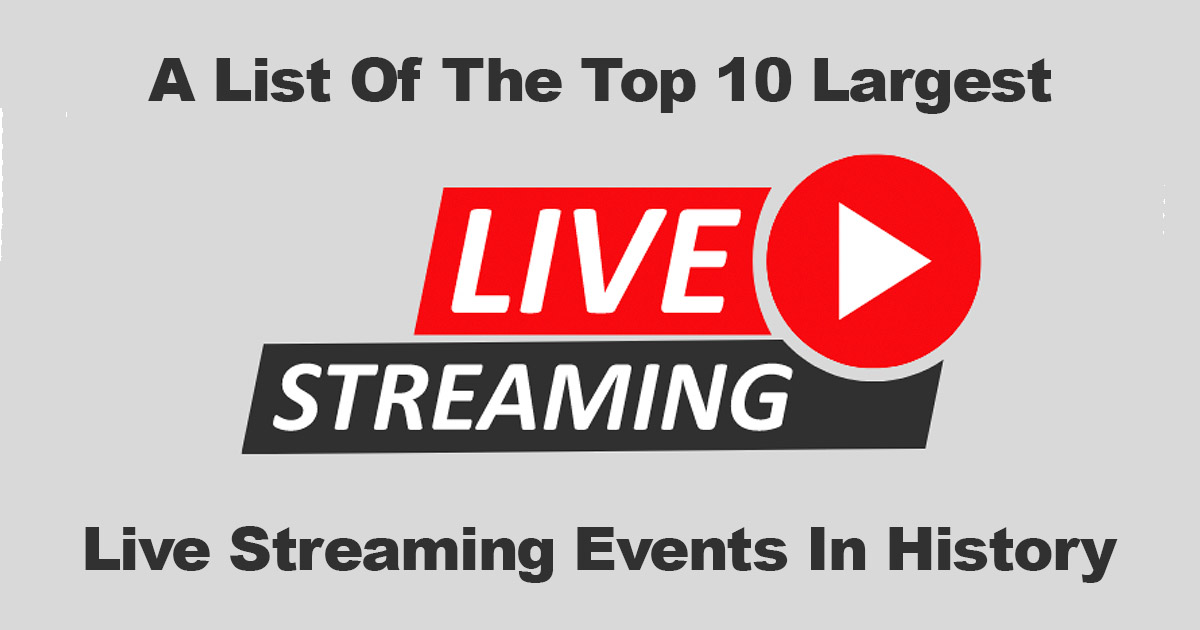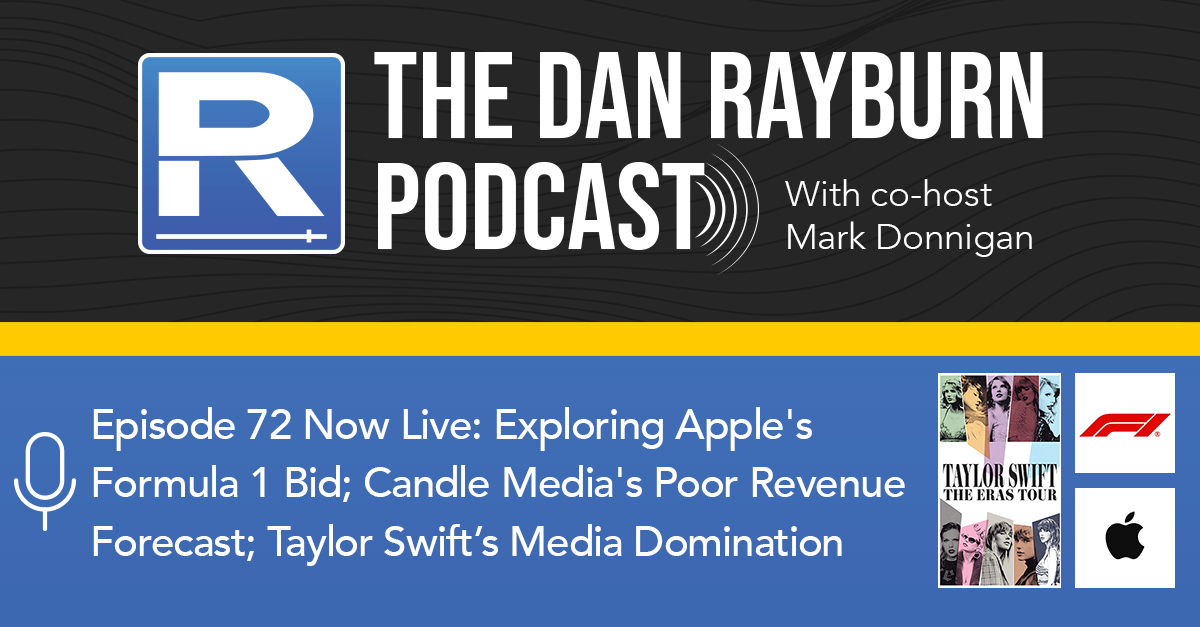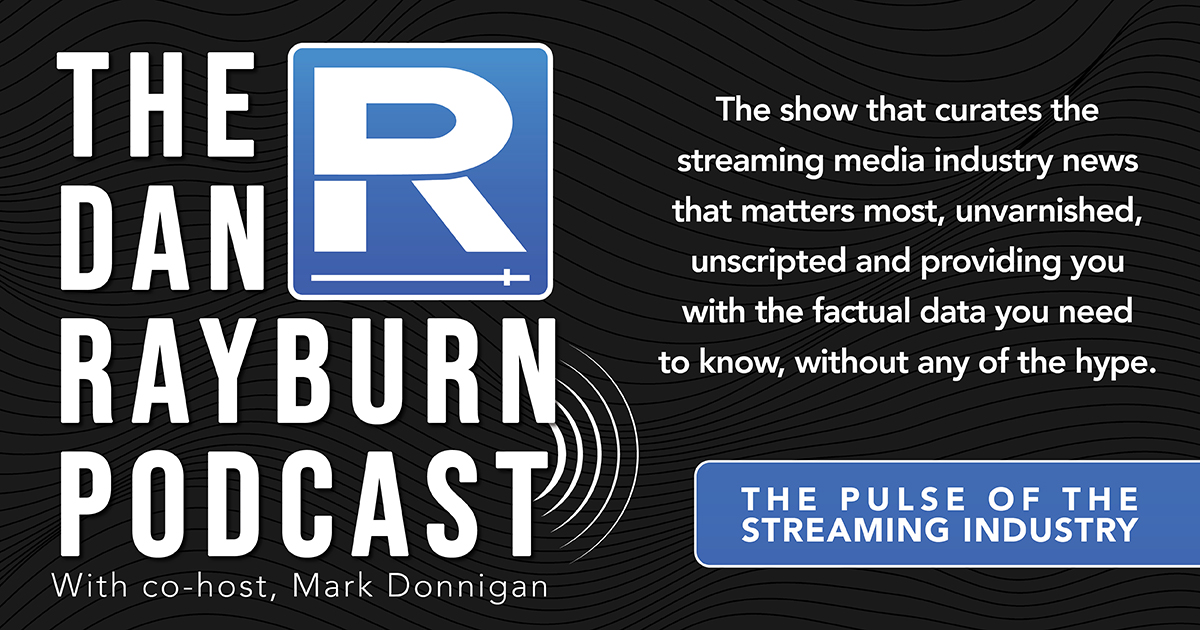
[Updated December 11, 2024] It has been three decades since some of the first live events were streamed online in 1993, starting with audio-only events suited for dial-up users. Since the streaming media industry started, many have continued to debate which online event has had the largest total viewership. In all honesty, no one truly knows the largest event since it’s impossible to fairly compare one event to another using the same methodology. No standards for reporting viewership exist, and almost no live-streaming events are validated by a third party. Details around unique viewers, average bitrate, and device usage are never released.
The title of the largest live streaming event on the Internet changes depending on the methodology used by the individual. To date, Netflix’s stream of the Jake Paul vs. Mike Tyson fight on November 15th, 2024, had the largest number of “concurrent streams” at 65 million. This does not consider the issues that many viewers had with not getting the stream to work or the poor quality of the video received. After Netflix’s boxing event, Disney’s stream of the cricket World Cup 2023 final match on November 19, 2023, on their Disney + Hotstar platform had the largest number of “concurrent viewers” at 59 million. However, no average bitrate number was released by Disney, nor was any data about the average viewing time. The previous record of 32 million “concurrent peak viewers” in 2023 by JioCinema of the IPL finals match had an average bitrate of around 1Mbps. I would expect Disney’s stream for the ICC to be similar in size. Live streaming events by Amazon and others have done almost half as many peak viewers, but the average bitrate was much higher than Disney or IPL’s at around 7Mbps. So, while one event had a larger audience, the other had a larger number of Tbps sustained and was delivered at a much higher quality.
Another problem in comparing streaming events is that none of the companies involved will discuss their definition of a “viewer.” For instance, with Amazon’s Thursday Night Football games, the video auto-plays in the background on the home screen of Fire TV devices and their website. Are users still considered viewers if they don’t click on the video and engage with it at all? Does a viewer have to watch the video for a certain length before being counted? We don’t know since none of the companies that stream live events will answer these questions, and their metrics could all be different. For example, in 2020, Netflix changed the metric they used to classify a VOD viewer from anyone who watched 70% of a title down to anyone who watched at least 2 minutes of a video, long or short form. That’s a big difference and a significant change. On TV, we have agreed upon viewer metrics and standards, but with streaming, neither exists. We also have different third-party companies releasing viewership data, such as Nielsen and Adobe, using different methodologies. Amazon and others use Nielsen to report viewership from live streaming events, but Nielsen won’t disclose how they define a user.
It also doesn’t help that many in the industry and the media incorrectly report numbers and don’t take the time to read the numbers given out properly. For example, in 2022, NBC Sports said the 11.2 million AMA number reported for the 2022 Super Bowl was not comparable to the 2021 Super Bowl or Amazon’s numbers from the 2022 TNF games. The 11.2 million was a viewers-per-stream figure and is not directly comparable to past years when co-viewing was not as prevalent. NBC Sports said the figure comparable to past years was the 6 million number released, which marked a 5% increase over the 2021 Super Bowl of 5.7 million. Out-of-home viewing and streaming did not factor into the household rating. And yet almost no one in the media picked up on that and reported it accurately, giving out wrong year-over-year growth numbers.
Many want to compare the popularity of live streaming events on the internet to viewership numbers of events on cable TV but are missing the point that you can’t compare the two from a quality of experience (QoE) standpoint. No matter where a viewer is in the country when watching an NFL game on pay TV or which pay TV provider they use, everyone gets the same video quality and experience. Broadcast TV has standards for video delivery, and the pay TV provider owns the hardware in the home. With pay TV, we all know what 720p or 1080p means and what it looks like. With streaming, no standards exist for video quality or type of streaming device, and users around the country all get a different level of video experience. One viewer on pay TV does not always have the same level of video experience as one viewer via a streaming service.
Based on the numbers I have seen released, below is my list of the top ten largest live streaming events in the industry to date. Nearly all are tied to cricket matches, NFL Football, and League Of Legends gaming. Many gaming events are broadcast in over a dozen languages by multiple broadcasters across dozens of platforms. It’s not the same distribution as Amazon’s Thursday Night Football games, which are only available in US territories, or cricket matches that are only available on a single streaming platform, so that’s another variable to point out. I may have missed some numbers released, so please comment on this LinkedIn post if you think another event should be added. The comment must include a link to a release, blog post, or article with numbers to be considered. I will update this list as more events occur and more numbers are announced.
- 65 Million: Netflix’s stream of the Jake Paul vs. Mike Tyson fight on November 15th, 2024, peaked at 65 million “concurrent streams,” according to Netflix. (source)
- 59 Million: The cricket World Cup 2023 final match on November 19, 2023, hit a “concurrent viewers” peak of 59 million on the Disney+ Hotstar platform, according to Disney. (source)
- 53 Million: The India-South Africa T20 World Cup final match on Saturday, June 29th, 2024, peaked at 53 million concurrent users on the Disney+ Hotstar platform, according to Disney. (source)
- 53 Million: The CC ODI World Cup 2023 semi-final match between India and New Zealand on November 15, 2023, hit a “concurrent viewers” peak of 53 million on the Disney+ Hotstar platform, according to Disney. (source)
- 44 Million: The ICC Men’s Cricket World Cup 2023 match between India and South Africa on November 5, 2023, hit a “concurrent viewers” peak of 44 million on the Disney+ Hotstar platform, according to Disney. (source)
- 43 Million: The ICC Men’s Cricket World Cup 2023 match between India and New Zealand on Oct 22, 2023, hit a “concurrent viewers” peak of 43 million on the Disney+ Hotstar platform, according to Disney. (source)
- 35 Million: The India-Pakistan match of the ICC Cricket World Cup played on October 14, 2023, hit a peak of 35 million “concurrent” viewers on the Disney+ Hotstar platform, according to Disney. (source)
- 32 Million: The May 2023 JioCinema stream of the IPL finals match had 32 million “concurrent peak viewers” as reported by the rights holder Viacom18. (source)
- 30.6 Million: Riot Games announced that the 2021 finals between DWG Kia from South Korea and Edward Game from China drew an average minute audience of 30.6 million viewers. (source)
- 25.3 Million: The semi-final match between India and New Zealand during the 2019 ICC Cricket World Cup had a peak concurrency of 25.3 million viewers on Disney+ Hotstar as reported by the ICC. (source)
- 24.5 Million: The May 2018 League Of Legends final peaked at just over 24.5 million simultaneous streams which was reported by ESC. (source)
- 24 Million: Chennai Super Kings’ victory over Royal Challengers Bangalore in April 2023 was watched by a peak concurrent audience of 24 million users as reported by the rights holder Viacom18. (source)
- 18.6 Million: In 2019 Akamai reported that the twelfth edition of the VIVO IPL cricket tournament peaked at 18.6 million concurrent viewers. (source)
- 18.4 Million: (***with a BIG caveat): Nielsen says the Amazon Thursday Night Football game on December 5th, 2024, AMA of 18.48 million viewers when using its Big Data + Panel measurement data. As always, the caveat is that Nielsen refuses to disclose how they define the term “viewer.” Since the video autoloads on the home page of Amazon’s website, amongst other places, it is unknown how they count viewers when a user doesn’t interact or click on the stream. The fact that Nielsen won’t disclose their methodology and that Amazon doesn’t make them disclose it publicly leads me to believe they count all streams, even if someone didn’t request it or watch it.
- 16.3 Million: (***with a BIG caveat and maybe should not be on the list): Nielsen says the NFL Wild Card game of the Chiefs and Dolphins on January 13th, 2024, had an AMA of approximately 23 million viewers across Peacock, NBC stations in Miami and Kansas City, and on mobile with NFL+. But that number includes TV in two local markets. So the number I am using for this list is the 16.3 million concurrent devices for Peacock. However, the 16.3 million number does not include viewers who streamed the game via NFL+ and vMVPDs like YouTube TV. So the total number would be a little higher, and NBC Sports used the term concurrent devices, not AMA for Peacock, so it’s not a perfect apples-to-apples comparison to data from other events. (source)
- 16 Million: Viacom18 reported that the April 2023 opening weekend of the Indian Premier League (IPL) on Jio Cinema had a simultaneous stream count of 16 million viewers. (source)
- 15 Million (***with a BIG caveat and maybe should not be on the list): Amazon reported that the NFL Thursday Night Football game between the Vikings and Eagles on September 14, 2023, had 15.1 million “viewers on Prime Video”. Amazon also reported that the NFL Thursday Night Football game between the Giants and the 49ers on September 21st, 2023, had 12.48 million streaming “viewers”. But note they did NOT say simultaneous users or average minute audience, just viewers, with no definition of how a viewer is defined. Also, they said that number was across “Prime Video, Twitch, and NFL+,” so that’s not concurrent streams on one platform. (source)
- 11 Million: JioCinema says the World Cup final between Argentina and France in December 2022, attracted 11 million concurrent users on JioCinema with an average viewing time of 30 minutes per match. (source)
- 10.3 Million: On May 27th, 2018, Hotstar’s live stream of the 11th edition of the Indian Premier League cricket tournament had its stream peak at 10.3M simultaneous viewers. (source)
Other notable mentions include the Indian Space Research Organization (ISRO) live streaming the soft landing of Chandrayaan-3 on the South Polar lunar surface in August 2023 which peaked at 8 million concurrent viewers. Some might wonder why events like the World Cup and Super Bowl don’t dominate the list because most viewers watch those events on pay TV. Fox said the 2023 Super Bowl was the most-streamed Super Bowl event ever, with an average of 7 million streams. For FOX’s streaming of the 2022 World Cup, the most-streamed contest was the World Cup Final between France and Argentina with an average minute audience of 1.3 million viewers. Outside the US the numbers are larger, but the majority of the World Cup is viewed on TV, which you can see a breakdown of here for the 2022 World Cup in Qatar.







